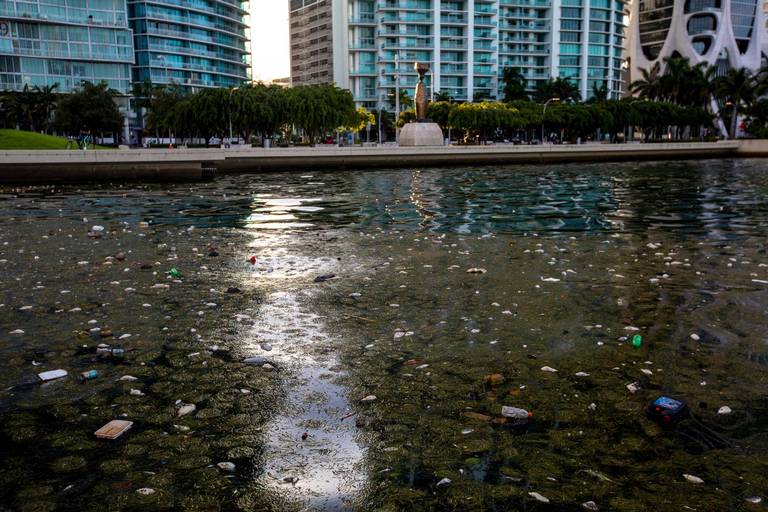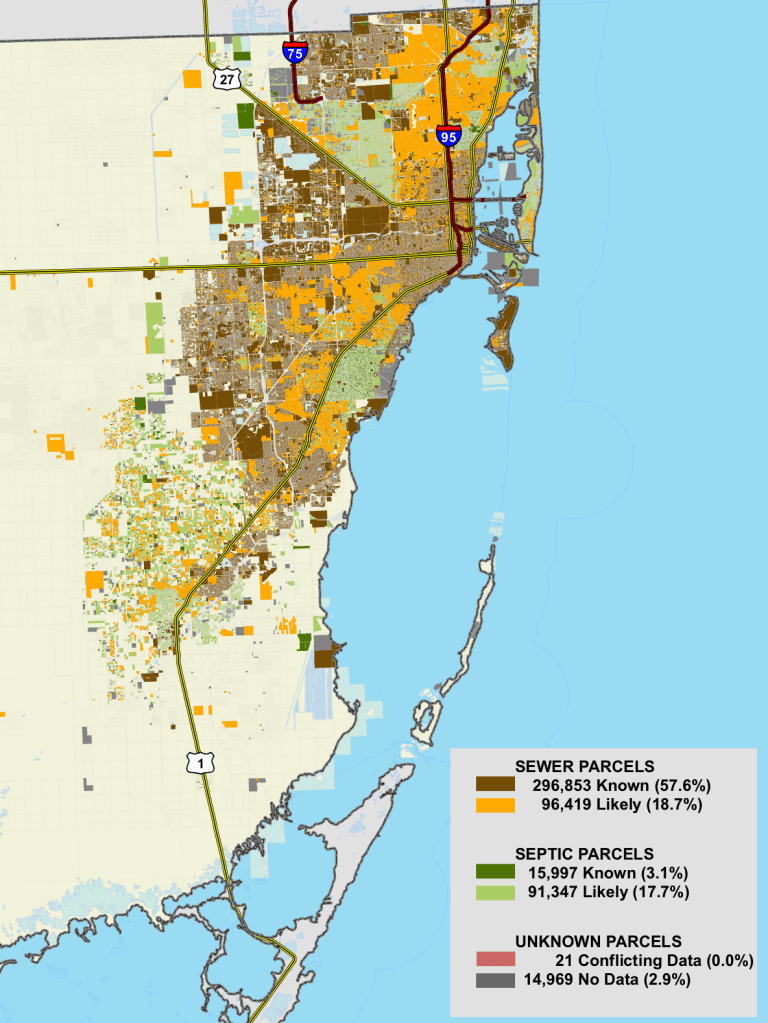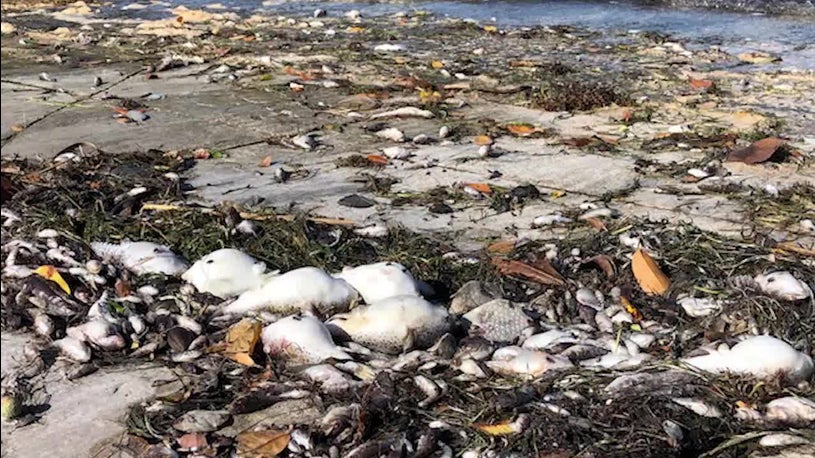Fish kills, Sewage Runoff, Federal Lawsuits, and National Park Designation: the threatened status of one of Miami’s most important landmarks.
This week, the social media feeds of Miamians were filled with piles of dead fish and aquatic life from Biscayne Bay, located in the heart of our city. Low oxygenation levels in the water due to a loss of sea grass and high water temperatures have led to this point, after a decade of slow action, negligence, and warming seas.
Members of the public, such as Katheryn Mikesell, and advocacy group Miami Waterkeeper sounded the alarm on social media earlier this week, causing the Fish and Wildlife Service to take samples. Scientists say early signs point to hypoxia (lack of oxygen) as the main cause of death, and signs of dead sea life can be found from Oleta River to Virginia Key.
More than 20 sq. miles of sea grass had died off in recent years due to increased nutrients in the water from stormwater and septic tank runoff. These chemicals enter the bay unfiltered and change the makeup of the water. This, combined with extreme water temperatures make it hard for the fish to get oxygen from the water, effectively suffocating them. While the usual water temperature in the bay is 83 degrees F, this week it is measuring above 90 in those areas.
Biscayne Bay is a National and State Park. It is used extensively for recreation and tourism, and is responsible for billions of dollars in real estate value. It is the site where the Tequesta Indians created the first settlement here, and later the site of Flagler’s Hotel bringing people to Miami.
It is also crucial in the Everglades Watershed, allowing runoff from all over Florida to safely filter through the groundwater and into the ocean. Unfortunately, stormwater runoff, aging sewer lines, at-risk septic tanks, and fertilizer applications threaten that cycle and centuries of watershed ecology.

In 2013, the EPA won a suit against Miami-Dade County Water and Sewer Department due to its aging sewer infrastructure under the Clean Water Act. The suit demonstrated that the County, from 2007-2013, allowed 29 million gallons of raw sewage to reach the bay due to capacity and line failure issues.
According to the suit, the county has 15 years to upgrade select sewer lines, and add a new line across the Green Technology Corridor, where businesses rely on Septic Tank systems to the tune of $1.6 Bn. So far, the County has commissioned $1.3 bn of this project, thanks to $660 million in financing from the EPA itself. These projects will take years to finish, and as of a recent study, will not meet the 15 year deadline.
Discharges, leaks, and nutrients reaching the bay have lead to the disappearing of sea grass for years, and which has lead to these extensive fish kills. Scientists and activists have been sounding the alarm for years, but images of dead sea life washing up have brought a more heightened attention to this.

Even if Miami-Dade fixes its existing sewer infrastructure, a larger problem looms with almost 100,000 septic tanks around the county. Rising water levels are threatening the filtration soil beneath the tanks that allow water to be purified before it enters the groundwater (see diagram above from Miami Waterkeeper).

Tens of thousands of septic tanks across the county are threatened, and can discharge potentially detrimental nutrients into our watershed in the coming decade.
Pinecrest, Coral Gables, Hialeah, Homestead, the Redlands, and Miami Beach have thousands of threatened properties. This is a crisis of government, allowing expansive, dense development, collecting massive impact fees, and not following up with the proper infrastructure. Currently, there is little plan or funds available to construct the over $3 bn in estimated new sewer lines.

To have a body of water this gorgeous next to a bustling city is rare. It takes more than luck and good conditions to keep it that way. Advocacy organizations like Miami Waterkeeper, Sierra Club, Miami Climate Alliance, and more play a key role in pushing local, state, and federal officials to step up.
City of Miami officials, worked with some of these organizations earlier this year to pass a fertilizer regulatory ordinance limiting its use in summer months, and close to waterways altogether. The EPA suit and court order is forcing Miami-Dade to upgrade its existing sewer system, and Broward is looking to follow suit. Municipalities are becoming stricter on site design for stormwater runoff for new construction permits.
Hopefully some of these smaller steps can lead us to the larger ones of replacing extensive septic tank usage and redesigning stormwater runoff. It is going to take a coalition of government, scientists, and advocacy organizations to reverse the damages done to the Bay, and bring back the sea grass beds that sustain life. We have no other choice but to act, as our life here depends on it.
—
Sources:
https://www.miamiherald.com/news/local/environment/article244959775.html
https://weather.com/news/news/2020-08-14-thousands-of-dead-fish-wash-up-in-biscayne-bay-fish-kill
https://www.miamiwaterkeeper.org/septic_vulnerability
https://www.miamiherald.com/news/local/environment/article235178352.html

I appreciate your post!
LikeLike
[…] horrifying visual evidence, as at Biscayne Bay, Miami in 2020 we do not seem to be be making progress to focus on cleaning up our environment any time […]
LikeLike